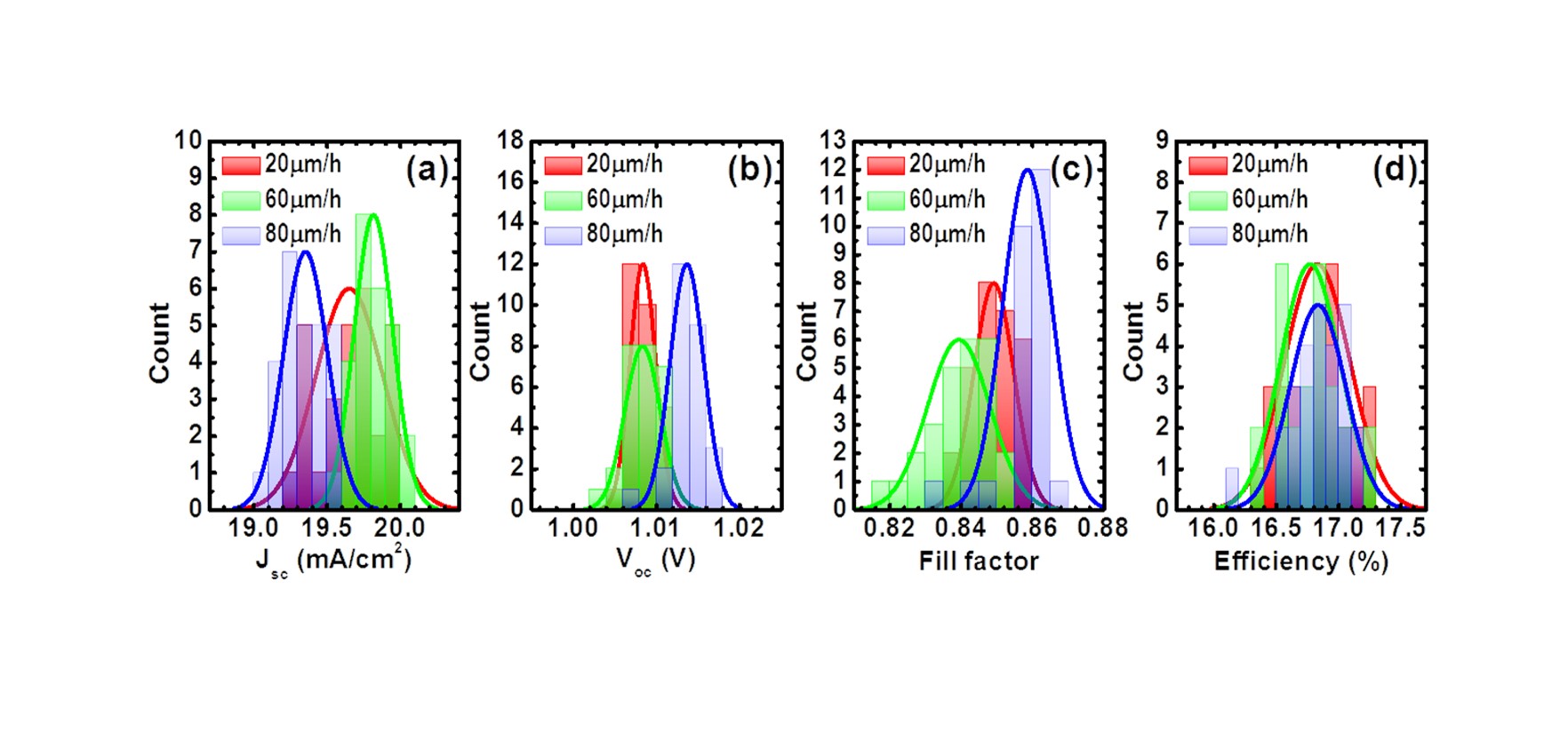■ Example of research topics ■
[ Solar ]
1. 4 junction by wafer bonding /
2. High-speed MOVPE /
3. EL and PL characterization /
4. Thin-film multi-junction (design and light trapping) /
5. 1.15 eV middle cell with MQWs /
6. Theoretical modeling of MQWs (quasi bulk approach and cell design) /
7. WoW /
8. ELO /
9. Dilute nitride MQW
[ Growth ]
1. III-V on Si photo detector /
2. III-V on Si solar cell
[ LED ]
1. Chip-white LED
[ Solar Fuel ]
1. CPV + water electrolysis /
2. CO2 reduction /
3. Semiconductor/electrolyte interface /
4. Polarization-controlled nitride photocathode /
5. Design of energy management system using hydrogen-based power storage
[ Quantum Modeling ]
1. Quantum modeling of insulators
Extremely high-speed GaAs growth by MOVPE for low-cost PV application
H. Sodabanlu, Hao Xu, K. Watanabe, Y. Nakano, M. Sugiyama
The III-V multiple-junction solar cells (MJSCs) have been a focus of attention for high conversion efficiency. Recently, a record efficiency of 46% has been achieved by 4-junction structure under concentration light of 508 sun.[1] Their high cost-performance ratio has restricted the uses of MJSCs to certain applications, notably in the areas of space applications and in concentrator photovoltaics (CPV). Considerable efforts are recently being focused on the reduction of production costs of MJSCs. Epitaxial lift-off, wafer reuse, and high-speed crystal growth by metalorganic vapor phase epitaxy (MOVPE) are considered promising means for achieving this. Results of price per watt analysis show that the reduction in the overhead time of MOVPE reactors, together with the improvement in material utilization efficiency, can reduce the cost of GaAs single-junction (1J) solar cells by 74%, when the growth rate of GaAs is boosted from 14 to 56 µm/h with performance loss less than 1%.[1]
Our research group reported the growth of GaAs p-on-n solar cells with a growth rate as fast as 80 µm/h, by shrinking the boundary layer thickness for the mass transport of a Ga precursor. In addition, the fabricated solar cells exhibited insignificant degradation of cell efficiency with an increase in growth rate to 80 µm/h as shown in Fig. 1.[3] However, a high V/III ratio supplied during the growth can plausibly be a reason for no degradation in the cell performance. Currently, we have been studying the influences of V/III ratios on the quality of GaAs grown at an extremely high growth rate. A target of this study is to optimize the cost-performance of a GaAs 1J solar cell. In addition, the growth mechanisms under fast growth rate conditions are being investigated. The achievement from this study can potentially lead to an improvement of source utilization efficiency and a significant cost decreasing of III-V semiconductor-based devices.
[1] F. Dimroth et al., IEEE J. Photovoltaics 6, 343 (2016).
[2] K. J. Schmieder et al., in Proc. IEEE PVSC-40, Denver, CO, USA, 2014, pp. 2130.
[3] H. Sodabanlu et al., IEEE J. Photovoltaics 8, 887 (2018).

Fig. 1 Distribution of (a) short-circuit current (Jsc), (b) open-circuit voltage (Voc), (c) efficiency, and (d) fill factor under AM1.5G illumination of GaAs p-n solar cells grown with various deposition rates without ZnS/SiO2 ARC.